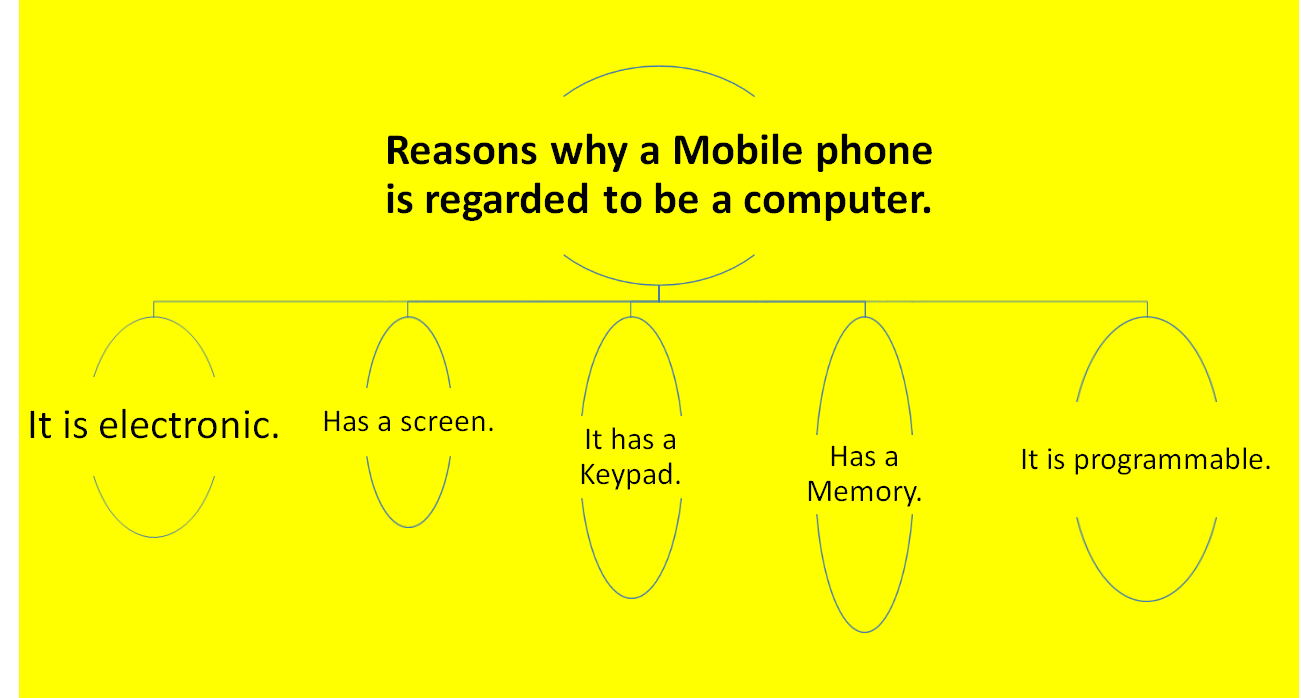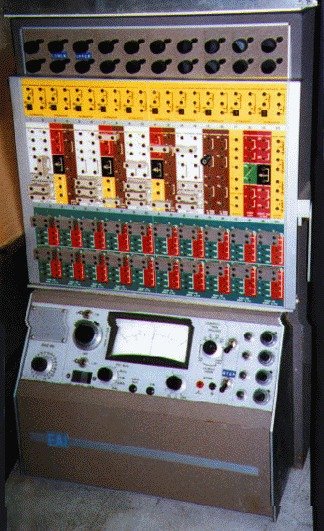CLASSIFICATION OF COMPUTERS
Computers can be classified according to
- Physical size
- Purpose
- Functionality
Classification of computers according to physical size
Based on physical size computers can be classified into four main groups
- Super computers
- Mainframe computers
- Minicomputers
- Microcomputers
SUPERCOMPUTERS
Supercomputers are the fastest, largest, most expensive & also the most powerful computers available.
Characteristics
- Fastest computers
- Largest in size
- Most expensive
- Huge processing power
- Very heavy
- Generate a lot of heat
- Use multiple processors
- They are operated by computer specialists. A Supercomputer can be operated by over 500 users at the same time
Applications
- Scientific research
- Defense and weapon analysis
- Nuclear energy research
- Weather forecasting
- Petroleum research.
Note. These tasks use large amounts of data, which need to be manipulated within a very short time.
Examples of Supercomputers:
- CRAY T3D
- NEC-500.
- CDC 6600
- ABC (Atanasoff-Berry Computer)
- ENIAC
Mainframe computers.
Mainframes are less powerful & less expensive than supercomputers. Mainframe executes many programs concurrently and supports many simultaneous execution of programs. They are mostly found in government and big organizations such as banks, hospitals, airports etc
Characteristics
- Have a large storage capacity
- Large in size
- Multi-user
- Multi-processing
- Supports a variety of peripherals
Areas where mainframe computers are used:
Mainframe computers are mostly found in government departments, big organizations and companies which have large information processing needs, e.g., they are used;
In Banks & Hospitals for preparing bills, Payrolls, etc.
In communication networks such as the Internet where they act as Servers.
By Airline reservation systems where information of all the flights is stored.
Examples of Mainframes:
- IBM 360,4381.
- ICL 39 Series.
- CDC Cyber series.
- BINAC
- UNIVAC
Minicomputers.
A Minicomputer is physically smaller than a mainframe. However, it can support the same peripheral devices supported by a mainframe.
Characteristics
- Multi-user, e.g., can be operated by 6 users at a time.
- Easier to manufacture & maintain compared to mainframes.
- Cheaper than the mainframes
- They handle small amounts of data, are less powerful, & have less memory than the mainframes.
- Minicomputers are slow compared to mainframe computers.
Applications
- Used in scientific laboratories
- Used in research institutions
- Engineering plants
- Automatic processing
Also they are well adapted for functions such as
- Accounting
- Word processing
- Database administration
Microcomputers.
Microcomputers are the PCs mostly found today in homes, schools & many small offices. They are called Personal Computers (PCs) because they are designed to be used by one person at a time.
Characteristics
- Are cheaper than both mini & mainframe computers.
- Are very fast (i.e. have high processing speeds).
- Small in size, hence they occupy less space in an office.
- Are more energy efficient (i.e., consume less power).
- Are more reliable than the early Mainframe computers.
Areas where microcomputers are used:
- Microcomputers are commonly used in:
- Training and learning institutions such as schools.
- Small business enterprises, and
- Communication centers as terminals.
The following are the various types of microcomputers in operation today arranged in descending order according to size.
- Desktop computer; is designed to be placed on top of an office desk
- Notebook or laptop; portable convenient for mobile users.
- Personal Digital Assistant(PDA); Is small enough to fit in the pocket
CLASSIFICATION ACCORDING TO PURPOSE.
Computers can be classified according to the tasks they perform as general or special purpose computers.
General purpose computers
They are the most common types of computers in use today. Their flexibility enables them to be applied in a wide range of applications like;
- Document processing
- Performing calculations,
- Accounting,
- Data and information management
Examples of general-purpose computers: Mainframes, Minicomputers, Microcomputers & Laptops used in most offices & schools.
Special-purpose computer.
A special-purpose computer is designed to handle/accomplish a particular specific task only. Such computers cannot perform any other task except the one they were meant to do. Therefore, the programs which are used in a special-purpose computer are fixed (hard-wired) at the time of manufacture.
For example;
In a computer Network, the Front End Processor (FEP) is only used to control the communication of information between the various workstations and the host computer.
A Special-purpose computer is dedicated to a single task; hence it can perform it quickly & very efficiently.
Examples of special-purpose computers:
- Robots used in a manufacturing industry for production only.
- Mobile phones used for communication only.
- Calculators that carry out calculations only.
- Computers used in Digital watches.
- Computers used in Petrol pumps.

Dedicated computer
A Dedicated computer is a general-purpose computer that is committed to some processing task; though capable of performing a variety of tasks in different application environments.
- E.g., the computer can be dedicated to carrying out Word processing tasks only.
CLASSIFICATION ACCORDING TO FUNCTIONALITY
Usually, there are two forms of data; Digital data, and Analogue data. Computers can be classified according to the type of data they can process as either.
- Digital computers.
- Analogue computers
- Hybrid computers.
Digital Computers
This is the most commonly used type of computers.
Digital computers process data that is discrete in nature. Discrete data also known as digital data is usually represented using a two-state square waveform. . It can process both numeric & alphabetic data within the computer, e.g., 0, 1, 2, 3…, A,B,C….
Their operation is based on 2 states, “ON” & “OFF” or on digits “1” & “0”. Therefore, any data to be manipulated by a digital computer must first be converted to digital form.
Most of the devices found at homes today are digital in nature.
Examples:
- ¨A Television with a button which is pressed to increase or decrease the volume.
- ¨Digital watches.
- ¨Calculators.
Analogue computers.
An Analogue computer is a computer that operates on continuous data. They carry out their data processing by measuring the amount of change that occurs in physical attributes/quantities, such as changes in electrical voltage, speed, currents, pressure, length, temperature, humidity, etc.

An Analogue computer is usually a special-purpose device that is dedicated to a single task. For example, they are used in specialized areas such as in:
- Scientific or engineering experiments,
- Military weapons,
- Controlling manufacturing processes like monitoring & regulating furnace temperatures and pressures.
- Weather stations to record & process physical quantities, e.g., wind, cloud speed, temperature, etc.
The output from analogue computers is in form of smooth graphs produced by a plotting pen or a trace on a Cathode Ray Tube (CRT) from which the information can be read.
Analogue computers are very accurate & efficient since they are dedicated to a single task.
They are very fast since most of them use multiple processors.
Examples of analogue devices:
- Thermometer.It uses a volume of Mercury to show temperature. The Thermometer is calibrated to give an exact temperature reading.
- A Petrol pump measures the rate of flow of Gasoline (petrol) & converts the volume delivered to 2 readings; one showing the volume & the other showing the cost.
- A Post-office scale converts the weight of a parcel delivered into a charge for posting.
- A Monitor with knobs that are rotated to increase brightness.
- A Television with knobs that are rotated to increase or decrease the volume.
Hybrid computers.
Hybrid computers are designed to process both analogue & digital data. They combine both the functional capabilities of the digital and analogue computers.
Hybrid computers are designed by interconnecting the elements of a digital computer & analogue computer directly into one processor, using a suitable interfacing circuitry.
Hybrid computers are more expensive.
Example;
In a hospital Intensive Care Unit, an analogue device may be used to measure the functioning of a patient’s heart, temperature and other vital signs. These measurements may then be converted into numbers and send to a digital device, which may send an immediate signal to the nurses’ station if any abnormal readings are detected.